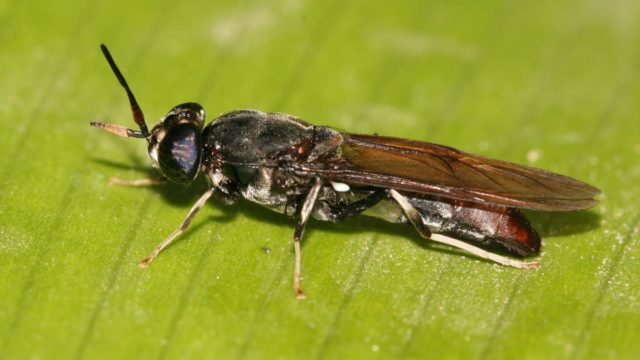
Fly into Sustainability: The Black Soldier Fly’s Mission in Zero-Waste Composting
In the realm of eco-friendly practices, black soldier fly composting stands out as an innovative and sustainable approach to organic waste management. The black soldier fly (Hermetia illucens) offers a remarkable biological solution to composting challenges, particularly adept at processing waste types, like meat and dairy, that are typically incompatible with traditional composting. Join us as we delve into the black soldier fly’s unique biology, discover how to nurture a colony, and learn about the various types of organic refuse they can efficiently convert into valuable compost.
The Lifecycle of the Black Soldier Fly: A Biological Phenomenon
Contrary to common houseflies, black soldier flies are benign entities, neither carrying diseases nor indulging in human food. Their life begins as adults with a singular focus on reproduction over their brief 5-8 day lifespan. Females exhibit prolific breeding habits, laying clusters of 500 to 900 eggs near decomposing materials—a process called oviposition. Remarkably, the eggs, laid with precision using an ovipositor, hatch into larvae that immediately set to work, consuming waste voraciously and cycling through five instar stages within weeks. As mature larvae transition to pupation, they leave a nutrient-rich trace behind, before re-emerging as non-feeding adults who won’t stray near human dwellings, as they lack a digestive system entirely.
Initiating a Soldier Fly Composting Operation
Initiating your own soldier fly colony requires either attracting wild flies or procuring larvae from a reliable source. When settled in a purpose-built composter, soldier fly larvae can thrive, particularly if their environment mimics moderate natural conditions and is safeguarded from the elements and potential predators.
Feeding the Legion of Soldier Fly Larvae
The diet of soldier fly larvae is astonishingly inclusive, allowing them to break down a wide array of organic detritus:
- Meat offcuts and discarded bones
- Leftover dairy items
- Prepared meals which typically attract rodents in open compost systems
- Carnivorous or omnivorous animal manures
These capabilities, augmented by a remarkable reduction in pathogen presence, make soldier fly larvae indispensable allies in managing potentially problematic waste.
Upkeep and Collection: The Soldier Fly Lifecycle in Action
The maintenance of a soldier fly compost system is notably less intensive than that of traditional compost, primarily because the larvae themselves agitate the matter they consume. As they near the pupation stage, they naturally migrate to a collection point, simplifying harvest and providing a valuable resource either as a direct feed for livestock or a base for processed meal.
Encountering the Inevitable: Challenges and Precautions
Despite the relative ease of black soldier fly composting, one must navigate potential challenges such as maintaining ideal temperature conditions and safeguarding the colony from predators. Furthermore, local regulations may influence the feasibility of cultivating these insects.
Embracing the Black Soldier Fly: Beyond the Aversion
Misgivings about flies and their larvae are common, yet the black soldier fly larvae defy these negative associations. Their hygienic existence and docile nature make them suitable companions in the composting journey. The closed-loop system they thrive in ensures a sanitary process, free from the typical concerns associated with maggots.
Conclusion: Towards a Sustainable Future with Black Soldier Fly Composting
Black soldier fly composting is a testament to the harmony between biological processes and sustainable practices. By adopting this method, individuals and communities alike can make significant strides in waste reduction and resource recovery, contributing to a healthier, more sustainable planet.
